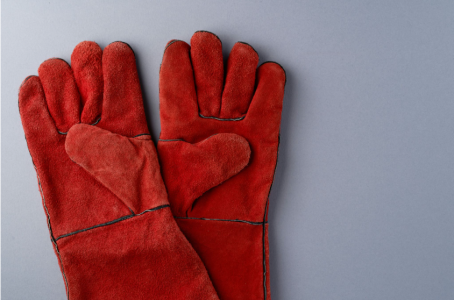A body language guru reveals the instant trick to spotting liars
By
Aubrey Razon
- Replies 0
As we age, we become more adept at spotting the fine line between truth and deception. But what if you could detect a liar in seconds?
Learn how a body language expert can reveal the subtle signs that give them away.
Vanessa Van Edwards, a renowned public speaker and author with a wealth of knowledge on interpersonal skills and effective communication, recently graced the airwaves of The Diary Of a CEO podcast.
There, she divulged four key signs that can help you identify deceit with the speed of a seasoned detective.

Imagine someone asserting, “I definitely paid that bill, didn't I?” The unnecessary question tag might just be a red flag waving at you to dig a little deeper.
Anxiety and nervousness can cause a person's volume to wane, and this acoustic retreat may signal dishonesty. Keep your ears tuned for these hushed tones of uncertainty.
This incongruence between verbal affirmations and physical reactions is a classic hallmark of a lie in progress.
Watch for the crinkled nose, the flared nostrils, and the bared upper teeth – these are the unspoken confessions of a liar.
Van Edwards emphasizes that while these cues are statistically linked to deceit, they are not foolproof indicators.
There's no Pinocchio's nose in real life, but these patterns recur often enough in liars to warrant your attention.
Joe Navarro, a former FBI agent and author, points to self-soothing behaviors as signs of “psychological discomfort.”
These can range from fidgeting and adjusting clothing to touching the face. It's the body's way of coping with the stress of dishonesty.
Gabrielle Stewart III, an insurance fraud consultant, suggests paying close attention to word choice.
Liars often use language that distances themselves from the lie.
They may switch tenses or avoid personal pronouns, as seen in the infamous response from President Nixon during the Watergate scandal.
While these tips from experts provide a powerful toolkit for detecting lies, it's important to remember that they are not infallible.
Context is king, and it's essential to consider the whole picture before jumping to conclusions. After all, in our golden years, we've learned that life is rarely black and white.
So, how can you apply these insights to your daily life?
Start by observing—not just listening—to the people around you.
Whether it's a family member, a friend, or a salesperson, keep an eye out for these subtle cues. And remember, a healthy dose of skepticism can be your best ally.
In the end, understanding body language is about empowering ourselves with knowledge. It's about enhancing our interactions and fostering genuine connections.
So, let's embrace this wisdom and navigate our conversations with confidence and clarity. After all, the truth is out there, and now, we're better equipped to find it.
 Have you ever caught someone in a lie based on their body language? Do you have any personal tips or stories about deciphering the truth? Share your experiences in the comments below.
Have you ever caught someone in a lie based on their body language? Do you have any personal tips or stories about deciphering the truth? Share your experiences in the comments below.
Learn how a body language expert can reveal the subtle signs that give them away.
Vanessa Van Edwards, a renowned public speaker and author with a wealth of knowledge on interpersonal skills and effective communication, recently graced the airwaves of The Diary Of a CEO podcast.
There, she divulged four key signs that can help you identify deceit with the speed of a seasoned detective.

Liars may feel disgusted with themselves and this can manifest physically. Image source: Pavel Danilyuk/Pexels.
The red flags of deception
1. Question inflection
Also known as Uptalk, this occurs when a statement suspiciously ends with the intonation of a question.Imagine someone asserting, “I definitely paid that bill, didn't I?” The unnecessary question tag might just be a red flag waving at you to dig a little deeper.
2. Volume drop
When the voice suddenly softens, it could be more than just a whisper of doubt.Anxiety and nervousness can cause a person's volume to wane, and this acoustic retreat may signal dishonesty. Keep your ears tuned for these hushed tones of uncertainty.
3. Mismatched words and body language
Picture asking a friend if they enjoyed the dinner you cooked, and they respond with a hearty “Absolutely!” while their nose wrinkles in distaste.This incongruence between verbal affirmations and physical reactions is a classic hallmark of a lie in progress.
4. The look of disgust
It's a visceral reaction, one that liars often can't conceal. As they spin their web of deceit, they may inadvertently flash a grimace of self-disgust.Watch for the crinkled nose, the flared nostrils, and the bared upper teeth – these are the unspoken confessions of a liar.
Van Edwards emphasizes that while these cues are statistically linked to deceit, they are not foolproof indicators.
There's no Pinocchio's nose in real life, but these patterns recur often enough in liars to warrant your attention.
Joe Navarro, a former FBI agent and author, points to self-soothing behaviors as signs of “psychological discomfort.”
These can range from fidgeting and adjusting clothing to touching the face. It's the body's way of coping with the stress of dishonesty.
Gabrielle Stewart III, an insurance fraud consultant, suggests paying close attention to word choice.
Liars often use language that distances themselves from the lie.
They may switch tenses or avoid personal pronouns, as seen in the infamous response from President Nixon during the Watergate scandal.
While these tips from experts provide a powerful toolkit for detecting lies, it's important to remember that they are not infallible.
Context is king, and it's essential to consider the whole picture before jumping to conclusions. After all, in our golden years, we've learned that life is rarely black and white.
So, how can you apply these insights to your daily life?
Start by observing—not just listening—to the people around you.
Whether it's a family member, a friend, or a salesperson, keep an eye out for these subtle cues. And remember, a healthy dose of skepticism can be your best ally.
In the end, understanding body language is about empowering ourselves with knowledge. It's about enhancing our interactions and fostering genuine connections.
So, let's embrace this wisdom and navigate our conversations with confidence and clarity. After all, the truth is out there, and now, we're better equipped to find it.
Key Takeaways
- A body language expert shares cues that may indicate someone is lying, though there is no definitive sign.
- Signs of deceit include question inflection at the end of statements, volume drop in speech, mismatched words and body language, and a look of disgust.
- Vanessa Van Edwards highlights that liars may feel disgusted with themselves and this can manifest physically.
- While these cues do not conclusively prove someone is lying, they can be useful indicators to explore further in detecting dishonesty.






